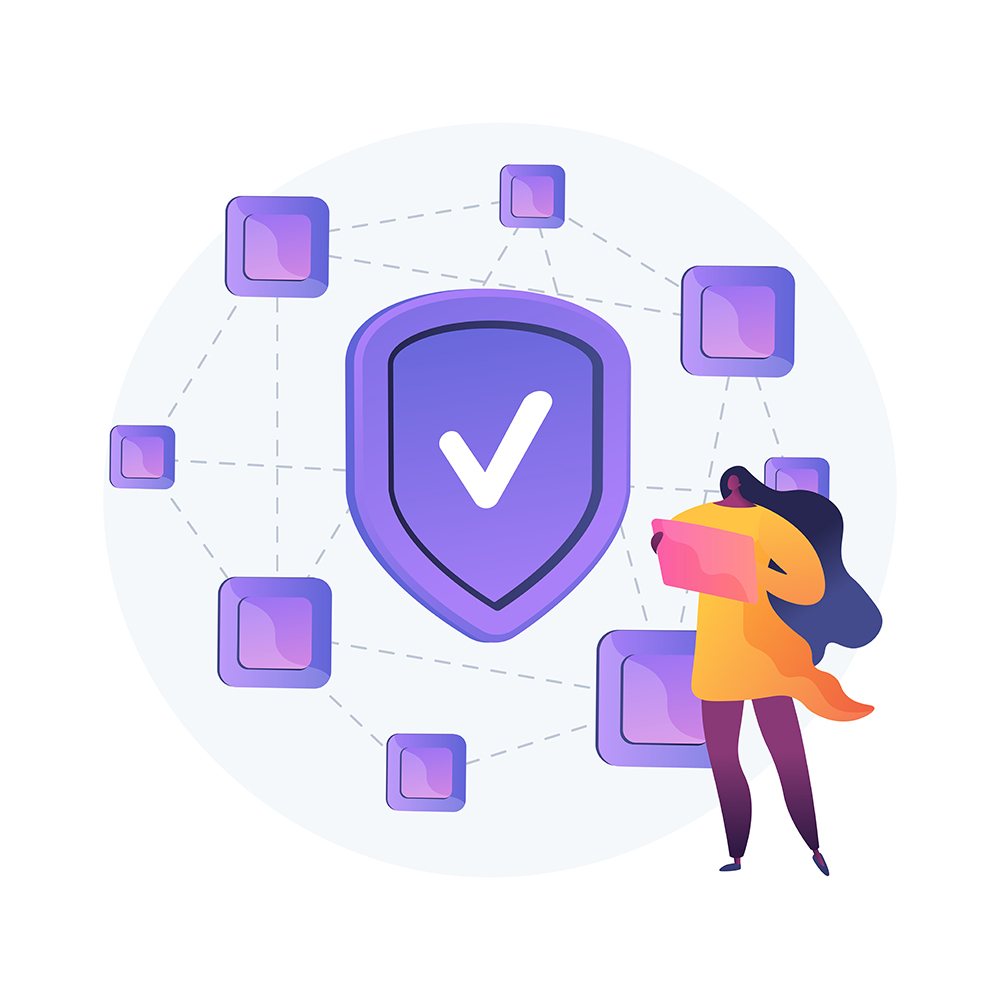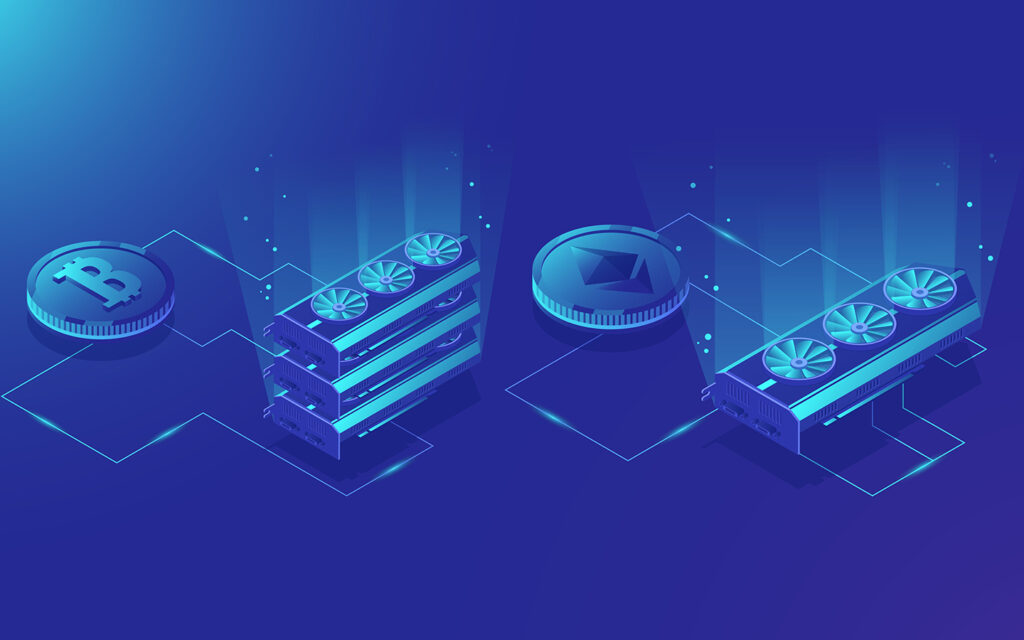It’s a general perception that blockchain is very complicated, but its core concept is very easy to understand. It’s a type of database that gathers information in the form of groups/blocks with specific sets of data. Each block can store the same yet limited amount of data, and once a block is filled, it’s linked back to the last block to form a chain. This chain of blocks containing data is known as the blockchain. You can also consider it a decentralized distributed ledger.
What Does Decentralization mean?
The concept of blockchain can’t be fully understood without understanding the concept of decentralization. Its implementation on almost all cryptocurrencies is pretty similar, with some minor changes. Let’s take the example of bitcoin, which needs an array of computers (also known as nodes) to store its complete blockchain.
It’s important to note that this specialized type of database stores the information of each and every transaction ever made on the Bitcoin network. The nodes that make up the whole network aren’t under one roof or controlled by any singular authority. The information between all the nodes also stays synchronized and 100 percent consistent. If one person tempers any node, then all the other nodes automatically identify the incorrect information after cross-referencing. It’s known as decentralization, and this model ensures that all the changes that take place on the platform are in the best interest of the majority of the users.

Transparency of Blockchain
The decentralized nature of the protocol also ensures transparency across the whole network. Any user having a person not or by accessing the blockchain can easily view all the transactions transparently. So much so, all the data of transactions taking place in real-time can also be viewed. Even if one node goes out of operation, the blockchain remains active because each node contains a copy of the transactions that gets updated every time a new block is confirmed. It means you can practically track Bitcoin if you want, whenever and wherever.
For example, if a cybercriminal attacks an exchange and steals bitcoin, that has actually happened in the past, where many Bitcoin holders lost everything. While it won’t be possible to find out the identity of the hacker, but the Bitcoins that they steal will easily be traceable. It means, if the hacker plans to use the stolen Bitcoin, then the information of the transactions will be shared across the nodes, and everyone will know about it.
Security of Blockchain
The concept of blockchain and how it operates is extremely secure. It’s almost impossible to break it because of the strong community and several other reasons. First of all, it’s important to note that the blocks in the blockchain are always stored chronologically in a linear pattern. It means that every new block will be added at the end, and once the block has been added, it becomes super difficult to change its content by going back. That’s because every block has its own hash code, and it also stores the hash code of the block that is located before it in the blockchain.
This hashcode is generated with the help of mathematical functions that convert the digital content of the block into a string of letters and numbers. In simple words, the hash code is directly related to the information that the block stores. If the information is changed, then the hash code also changes itself, which ensures security.
For example, if a hacker wants to steal Bitcoin, then he’ll need to change the information on the block, which will change its hash code. But because of the cross-referencing of all the other nodes, the newly altered block will be regarded as illegitimate.

Bitcoin and Blockchain
The primary aim of the blockchain is to record and distribute digital information but to keep it from being edited. This technology was first introduced by W. Scott Stornetta and Stuart Haber in 1991. The Bitcoin network is based on blockchain technology which is actually a new electronic cash system. It was the first peer-to-peer decentralized payment method that is not controlled by any singular authority.
Applications of Blockchain
Now that you understand that blockchain is an extremely secure and transparent way of storing data, it’s time to understand how it can be used. Some of the most popular organizations that have already implemented blockchain are Unilever, Siemens, AIG, Pfizer, Walmart, IBM, etcetera. It provides the brands with the ability to track everything about their product from the very beginning. Here are some significant applications of blockchain.

Baking ana Finance
There is no other industry that can be benefited more from blockchain than the banking industry. We all know that almost all financial institutions offer their services five days a week and only during their business hours. For example, if you need to visit any bank for urgent work on Friday in the afternoon, then you’ll need to wait for two more days. Moreover, the transaction can even take one to three days to complete, even if you have performed in the business hours. Blockchain has the potential to revolutionize the whole banking system.
First of all, it never sleeps, and you can make transactions whenever you want, and the system will respond. Moreover, all the transactions are completed on the blockchain almost instantly, and the transaction fees are also fractional as compared to the traditional method.
Currency
Blockchain can transform the current centralized model of currency where the users are at the whim of the government or their banks. Moreover, the users’ PII (personally identifiable information) is also stored at a central place which can be compromised with a single successful hacking attack. As we have already mentioned, the security of blockchain currency can be secured the same way, which not only will eliminate the security risks but it will also significantly reduce the transaction and processing fees.
Healthcare
Every year healthcare centers have to pay tens of millions of dollars to recover from cyberattacks. According to recent statistics, about 21.3 million patients’ records were breached only in the second half of 2020. The use of blockchain in the healthcare industry can store the medical records of patients securely. When the medical record of any patient is created and signed, it can be then turned into the hash code and stored in the blockchain. It will provide the customers with the confidence that their data is stored and no one can alter it.
Real Estate
If you have spent time on buying or selling a property, then you’d already know that the whole property recording process is both inefficient and burdensome. Even in this age of technology, you need to send the physical copy or original deed to the local recording office as well as to government employees. There the deed is manually entered into the centralized database from where it gets its way to the public index. If there is any dispute, then the property claims must be reconciled with the public index. This process costs you so much time, and energy and blockchain can make it efficient and easy. The need to scan the documents and manage the physical deeds will be entirely eliminated if the ownership is verified and stored on the blockchain.
Smart Contracts
The best way to negotiate, verify, and facilitate the contract agreements is to use blockchain’s smart contracts. These contracts are created in a way that they are automatically carried out if both parties agree to a particular set of conditions. For example, a person wants to take an apartment on rent using a smart contract. The tenant and the landlord agree to the conditions that the landlord will send the tenant door the door code once the security deposit is paid. Once the tenant deposits the security fee and both the parties send their respective deal portions to the smart contract, the door code will be automatically exchanged with the security deposit on the smart contract. But if the landlord fails to send the door code to the tenant, the smart contract will be ended by refunding the security deposit.
Advantages and Disadvantages of Blockchain
With all of the advantages, blockchain also comes with some downsides as well. Here’s a list of some of its most important advantages and disadvantages that you need to know.

Advantages
- Improves accuracy and eliminates the change of human error
- Great banking alternative
- Reduced cost greatly because third-party verification is not needed
- Transparent technology
- It’s almost impossible to tamper because of decentralization
- An excellent way to secure personal data
- Transactions are efficient, private, and secure
Disadvantages
- Mining major cryptocurrencies such as bitcoin required significant technology cost
- The most commonly used payment method on the darknet
- It’s not a distributed computing system
- Scalability is a significant issue
- Users are at their own risk because of private keys
- Interoperability issues
Bitcoin and Blockchain
Blockchain is undoubtedly a great technology that can transform the landscape of multiple industries within a few years. Not only does it provide the users with greater confidence, but it also brings new opportunities and efficiencies.

